Science Illustrated delivers natural science, break through discoveries and an understanding of the world for the entire family. Packed with stunning photography and in-depth editorial it’s a visually spectacular gateway to the world looking into the beginning of life to distant objects in the universe.
SUBSCRIBE & START SAVING NOW!
Science Illustrated
MEGAPIXEL // ANT FOOD
MEGAPIXEL // TITANIC
Thwaites glacier gets gloomy update • Using underwater drones and planes, scientists have been making new studies of the Thwaites ‘Doomsday’ glacier in Antarctica. Their early findings confirm gloomy predictions for one of the world’s biggest ice sheets.
Warm water makes glaciers slide into the sea • The huge glaciers and ice shelves of West Antarctica seem massive and solid, but ingress of warm seawater could trigger an unstoppable collapse.
Old DNA lends hope for Tassie tigers • The last confirmed Tasmanian tiger died in Hobart Zoo in 1936. But scientists have reconstructed an almost complete genome that could bring the animal back to life.
Drone images of imploded ‘Titan’ sub • The US Coast Guard has released two video recordings showing remains of the Titan mini-submarine that imploded while on a sightseeing trip to the wreck of the Titanic in June 2023, killing all five passengers.
Emergency pump buys bacteria crucial time • A non-resistant bacterium can survive the initial attack of an antibiotic just long enough to have resistant genes delivered from another bacterium.
Future antibiotics may come from human guts • Antibiotic resistance is a global issue for the future. But researchers have found hundreds of good ideas for future antibiotics within the guts of 1773 test subjects. One proved just as efficient as drugs already in use.
Distant planet offers a window to Earth’s destiny • In about five billion years, the Sun may swallow our Earth – but then again it might not. A newly-discovered planet gives us an idea of what could happen if the Earth survives.
Has human lifespan hit a ceiling? • After decades of life expectancy gains, the rate of increase seems to have slowed, allowing researchers to predict our upper age limit.
What is osteoporosis? • “I often hear of people who have been diagnosed with osteoporosis and get fractures. But what does it mean – is it the same as brittle bones? And where does the phenomenon come from?”
From how far away could you see that there is life on Earth? • “I read of astronomers looking for life on distant planets using various methods. From how far away would aliens be able to see life on Earth?”
GAME ON • Which is better for the environment – tin foil or plastic film?
“I am very ticklish, but I cannot tickle myself. Why is that?”
What are the strange floating spots in my eyes? • “I sometimes experience small dots and strings in my field of vision. Where do they come from, and are they harmful?”
Why do some dogs eat faeces? • “My dog consumes horse droppings and even cat poo. Is it just a fascination with the smell, or does he get any nutrients from feeding on other animals’ faeces?”
How did we get metric units of measurement?
How could we ever run out of helium? • “We’re told that helium is one of the most abundant elements in the universe, but I also read that we may eventually run out of helium. How can both be true?”
Aerialists pushing the limits of physics • They hover in oxygen-depleted air above the Himalaya, navigate by integrated GPS, or dive at 300km/h. Some birds push their flying skills to the limit in search of prey and breeding grounds.
Quantum clocks may be able to show that ALL OF TIME IS TANGLED • Two particles can behave as if they are connected, even though they are at opposite ends...

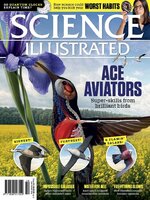 Issue 114
Issue 114
 Issue 113
Issue 113
 Issue 112
Issue 112
 Issue 111
Issue 111
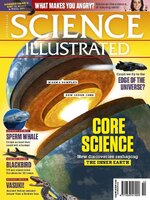 Issue 110
Issue 110
 Issue 109
Issue 109
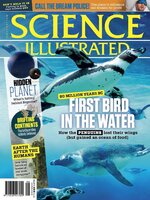 Issue 108
Issue 108
 Issue 107
Issue 107
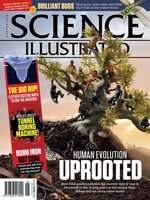 Issue 106
Issue 106
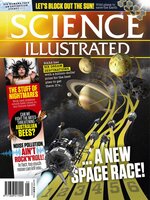 Issue 105
Issue 105
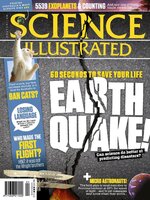 Issue 104
Issue 104
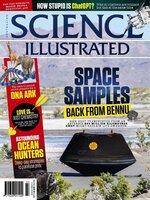 Issue 103
Issue 103
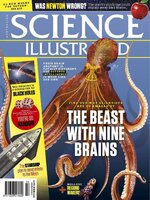 Issue 102
Issue 102
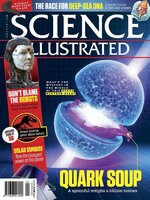 Issue 101
Issue 101
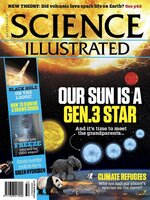 Issue 100
Issue 100
 Issue 99
Issue 99
 Issue 98
Issue 98
 Issue 97
Issue 97
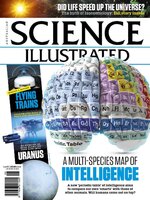 Issue 96
Issue 96
 Issue 95
Issue 95
 Issue 94
Issue 94
 Issue 93
Issue 93
 Issue 92
Issue 92
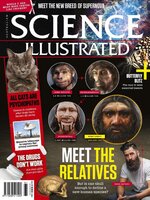 Issue 91
Issue 91